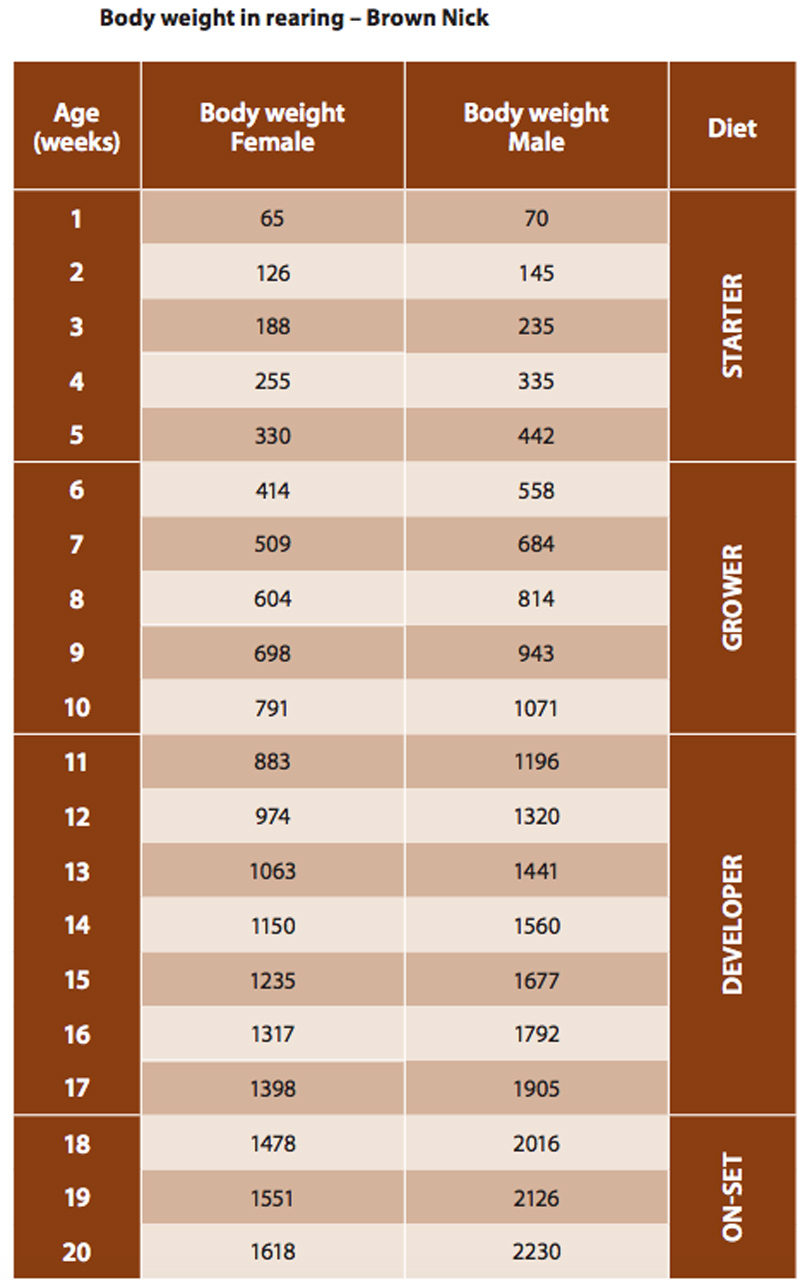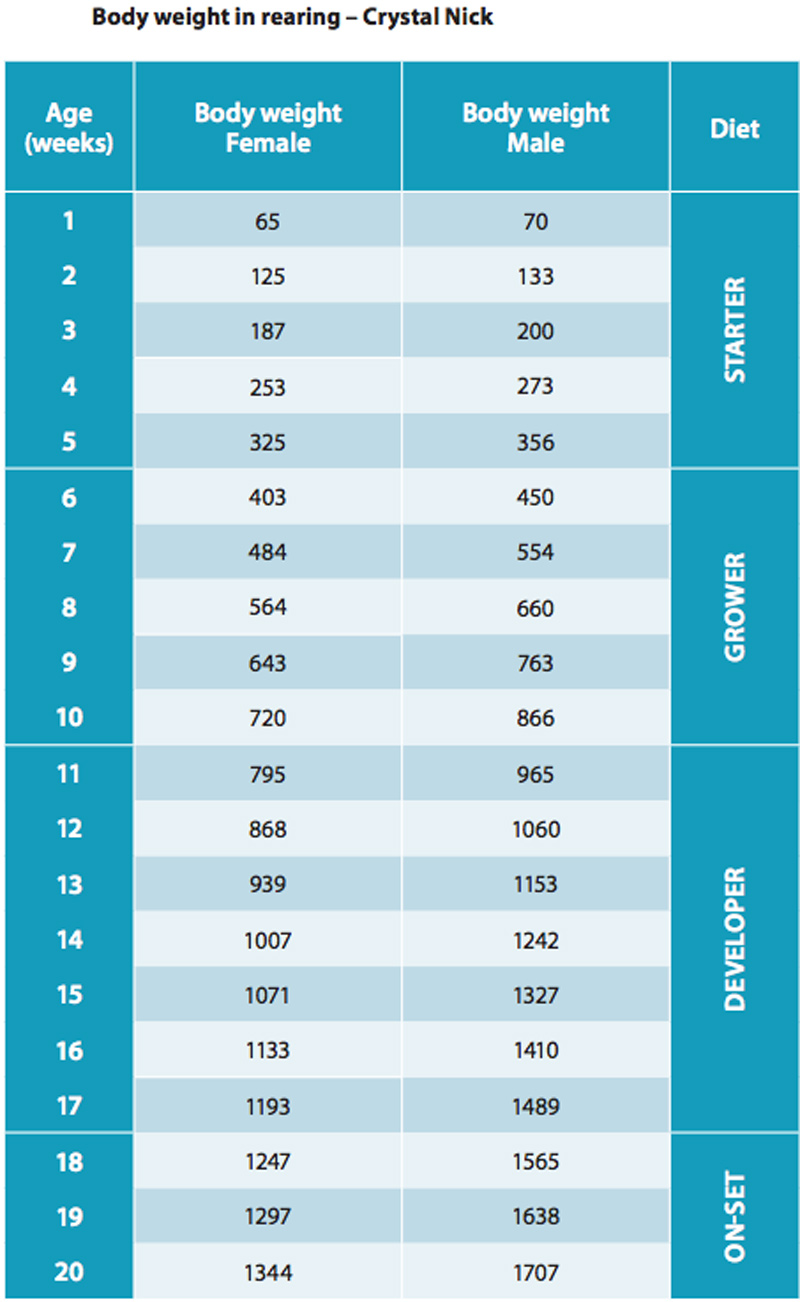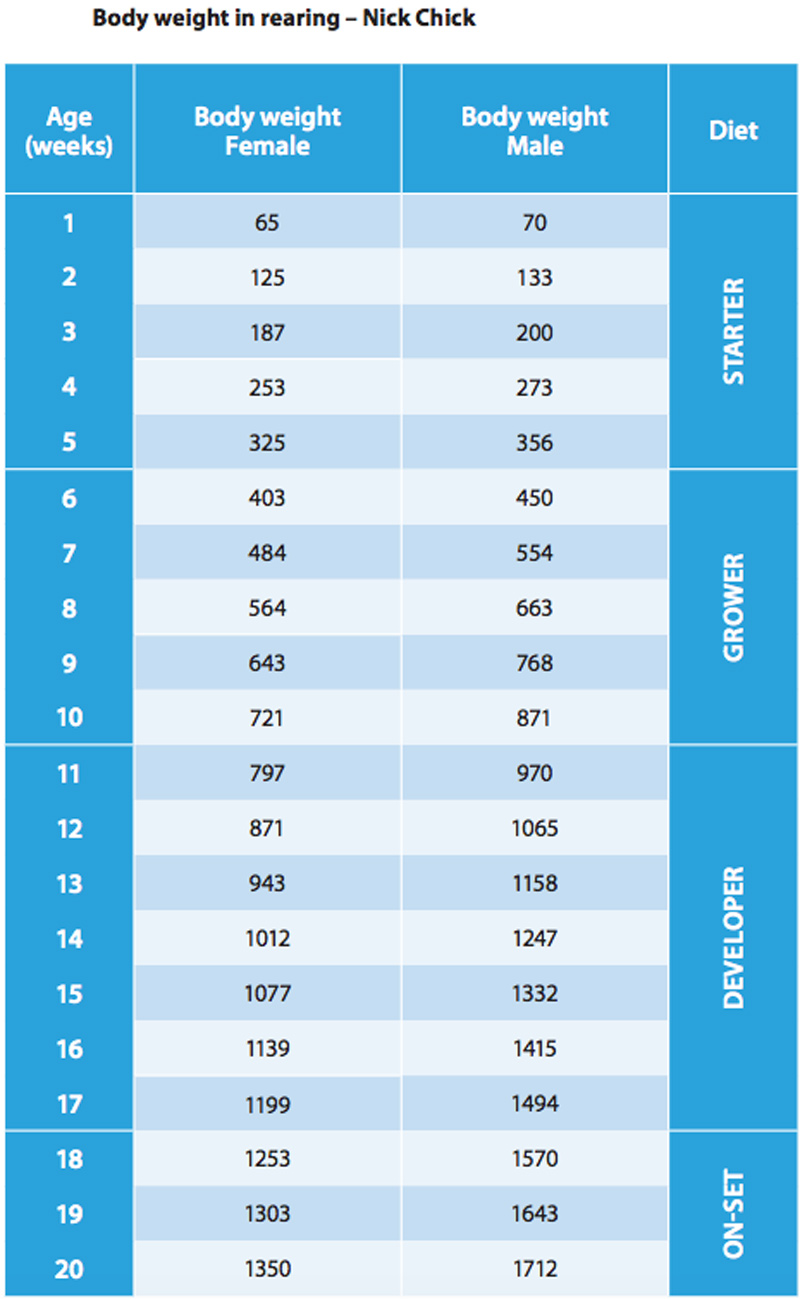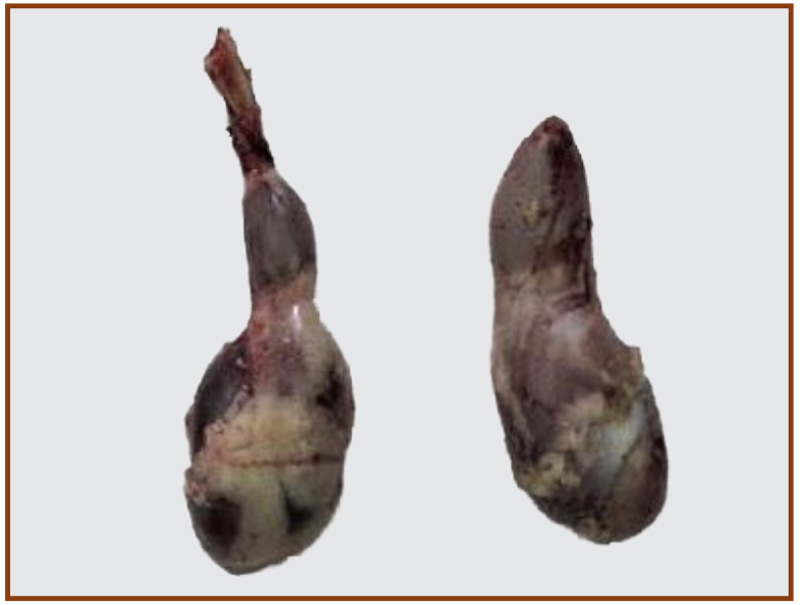Weight gain slows during this period. That is especially true for the weekly percentage increase of body weight. However, the growth rate must be always maintained throughout this period.
Most of the skeleton and muscular systems have already been formed by now.
On the other hand, fat disposal improves during this period. A correct fat level in the body is necessary to achieve the production peak. Over fat females will face many issues in production (prolapse and pecking late in production) while overfat males could have fertility problems. Avoid over-fattening.
The feed intake is higher than in previous weeks. The birds may be given a more diluted feed.
If birds are within the weight standard or slightly above:
If birds are under the standard weight
*For weighing protocol see page 70.





Attn: this is only possible if the breeders are kept at the right stocking density and there is enough feeder space.
The feeding program should be similar to the one the pullets will have in production.
You can start this program as soon as 5–6 weeks of age (growing period) when breeders are spread over all cages, or have access to all the living space in floor/aviary systems, body weights (females and males) are at or above standard and uniformity is above 85%.


Even with good hatchery practice, some males will be confused with females and will be delivered and vice versa: some females will be delivered as males. such. It is best to separate them from the hens as soon as they are identified. By 7 weeks or earlier, this should be very evident and this task can be easily performed. Non-productive hens can also be separated from the flock at the same time.
When white males are not comb treated, only mix with females when all the sexing errors were culled (around 7 weeks of age).
KEY POINTS
· Ensure body weight gain and correct development by maintaining feed consumption.
· Train hens to develop a good feed intake capacity by working with diluted feed and adapted feeding times.
· Remove non-productive birds from the flock.
· Remove sexing errors at around 6 to 7 weeks of age.
Welcome! Your admission is granted, please allow for 2 seconds as the door to our VIP room is opening for you right now! Please come in!
Don't have an account? Sign up now
